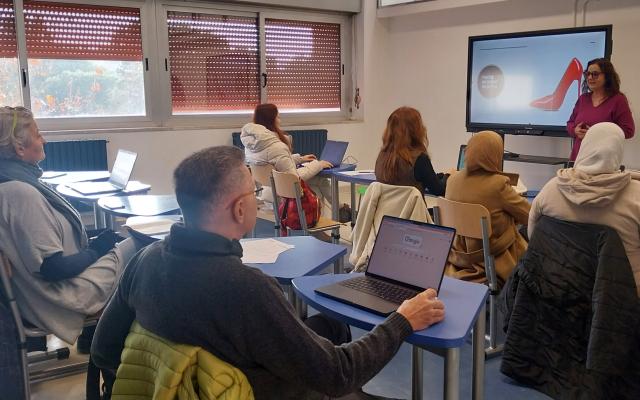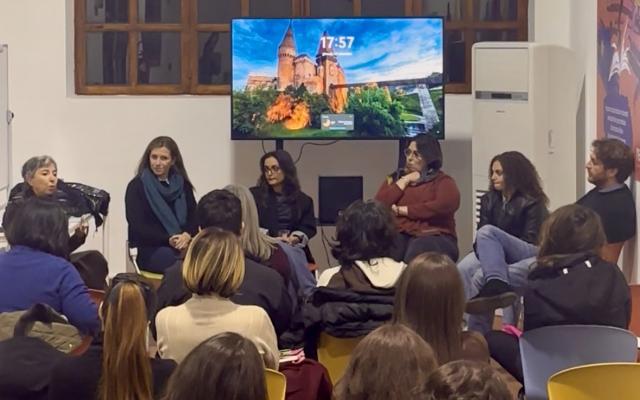4 min.
Robots in the Campidoglio: tomorrow’s scientists compete. Comparing the best projects presented by schools and universities by Fabio De Ponte
Rome, May 7 (APCOM) – The ball is set, the audience holds its breath, the goalkeeper is ready, but it’s not the usual free kick. The game is between two humanoid robots and the fans are the artificial intelligence students from the Rome La Sapienza University as well as German and Greek University students that are participating in the International Robotics Trophy. The ball is kicked. Out. Luca Iocchi, researcher at the Computer Studies Department, picks up the small orange ball and put sit back on the field. The game continues …
The third edition of the robotics trophy, promoted by the Fondazione Mondo Digitale was held on May 7th at the Rome City Hall, the Campidoglio. The objective is to bring science back into Italian schools by getting students interested through ludic activities. The competitions, in fact, involved not only university students, but also students still attending school. The youngest, Enrico (13), attends the Mozart Middle School in Rome. Enrico and three other classmates participated in the “mini explorer” category for robots that have to find their way through a labyrinth and identify light sources. The robot that finds its way through the labyrinth quickest and identifies all the light sources wins. A Lego Mindstorm robot also competed. The Mindstorm is a small robot with light and tactile sensors that is programmed via an ad hoc interface developed for students. “It recognises obstacles with a sensor that works like a radar,” Enrico explained to his adversaries. “It stops, turns right or left, and moves in the direction that presents the farthest obstacles.”
Eddy (17) and Leonardo (18), who are a little older and attend the Rome It is Galilei School, participated in the same competition. “In three weeks,” they explained, “we assembled our robots.” A very essential and crafty robot equipped with three photo sensors that allow it to identify the direction from which light arrives, two metal sensors that activate a contact when the robot collides with an obstacle and two motors that control movement, simple and elegant. Eros Ghio and Alberto Aimar from the Itis Villauri School in Fossano, in the Province of Cuneo presented a far more complicated robot. Building on the work of previous students, they created a six-legged robot capable of surveillance and transport. “We projected all the components,” they explained. “The metal parts were made with a machine at the school and the plastic ones were prepared with a three-dimensional printer that produces the parts based on a simple drawing with polymers. We studied spiders, observed their movements through a series of videos, mostly from YouTube. Then, we imitated them. Our robot can even climb stairs.” Their goal is to continue on this same project at university. The school, in fact, has an agreement with the Turin Politecnico and they will receive credits for their work.
These games represent far more than just a few hours of fun. In Italy, according to the 2009 Mulino Report on Science and Society, four out of ten students have such an insufficient scientific preparation that they do not know whether an electron is bigger or smaller than an atom. Moreover, the Fondazione Mondo Digitale, points out that Italian students have the lowest aptitude in Europe for Mathematics. Action is urgent and robots are an excellent way of attracting students. “Robots,” Iocchi explains, “even attract small children, because they are curious toys. The fact that a robot can miss a free kick makes the whole ordeal adventurous, while if everything were predetermined, it would all be far less spectacular. This is never boring.” And that is why fifty elementary school children crowd around to watch the game: children that could one day become researchers.
Starting next year, “La Sapienza” Professor Daniele Nardi explains, we will kick off the first university course in artificial intelligence and robotics. The applications in this field are infinite. “Humanoid robots are an excellent research platform. We have developed a surveillance system for boats on the Grand Canal in Venice, while our flying robot ensured a reconnaissance from above in l’Aquila (for the areas devastated by the recent earthquake in central Italy) allowing the identification of areas that should be searched for humans.” There are many, many potential applications, but we need more researchers and these championships “are an excellent opportunity to attract them.”


